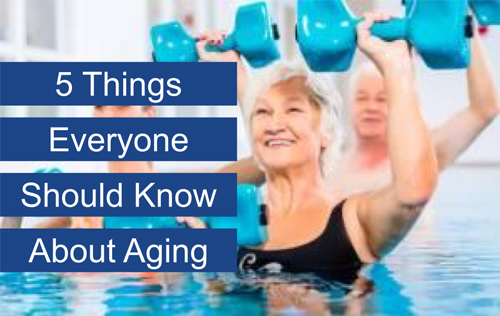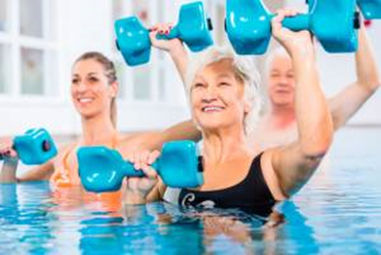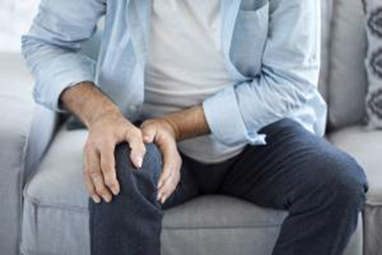
We’re all for embracing our age and loving the ageing process; they’re called the golden years for a reason. But alas, ageing and degeneration can cause a range of conditions and diseases, including a host that affect our bones, muscles and joint health. Left untreated, these can lead to discomfort, pain, chronic pain and even immobility. Now, no one wants that… The good news?
Caught early, many of the conditions can be prevented, minimised or treated with the latest medical advances and techniques, with minimally invasive procedures and faster recovery times than ever before.
Here, the essential guide to understanding how ageing and degeneration affects our muscles, bones and joints, and what we can do about it now to ensure those golden years truly are golden later!
1. Changes In Muscle, Bone And Joints As We Age
We’ve been told to drink our milk and eat our cheese for good bone health since we were knee-high to a grasshopper – and for good reason. As we age we lose bone mass and density, especially after menopause, and our bones become more brittle because of mineral loss. Orthopaedic surgeon Mr Austin Vo says osteoarthritis – a chronic and progressive degenerative disease where the cartilage on the joint surfaces wears out, resulting in the bones rubbing together, causing pain, swelling and loss of motion – is also an issue, affecting about 2.1 million Australians, predominantly aged 55+.
And those muscles we may have pumped up proudly for photo opportunities as spring chickens? Well, as we age our muscles decrease in number, size and mass. Similarly, our tendons (the cord-like tissues that attach muscles to bones) lose water content and our ligaments (which hold the bones together) degenerate with age.
As for our joints, well, they become stiffer and less flexible and have less motion. Our meniscus (which acts as a shock absorber for the knees) also degenerates, making it much more susceptible to tears.
Now, the good news…
2. How An Active Lifestyle Affects The Muscles, Bones And Joints
 Staying active can help considerably. According to the Victorian government’s Better Health Channel, staying active can help you “sleep better, stimulate your appetite and may reduce your risk of heart disease, dementia and falls. It also helps improve and maintain your fitness, strength and balance.”
Staying active can help considerably. According to the Victorian government’s Better Health Channel, staying active can help you “sleep better, stimulate your appetite and may reduce your risk of heart disease, dementia and falls. It also helps improve and maintain your fitness, strength and balance.”
In fact, an inactive lifestyle causes bone and muscle wastage, as “the cartilage shrinks and stiffens, and it actually reduces joint mobility,” explains Mr Vo. This can obviously lead to a vicious cycle no golden oldie wants to be a part of. Who doesn’t know an older person who has become so afraid of falling and breaking bones that the fear actually prevents them from being active (and leads to bone wastage)?
The Australian Physical Activity Guidelines encourage people aged 65+ to do at least 30 minutes of medium-intensity exercise each day. If the thought of 30 minutes a day makes you sweat, relax – it can be done as three x 10-minute sessions. It’s recommended to do a range of different activities to stay on top of fitness, flexibility, balance and strength issues, but remember, everyone’s fitness levels are different, so speak to your GP, who can help create a fitness plan specific to your needs.
3. Staying at a healthy weight is important
A whopping 67% of Australian adults are considered overweight or obese. According to the Australian Institute of Health and Welfare, “excess weight, especially obesity, is a major risk factor for cardiovascular disease, type 2 diabetes, some musculoskeletal conditions and some cancers. And, as the level of excess weight increases, so does the risk of developing these conditions.”
Carrying excess weight also places strain on our body – from our heart (making the heart work harder to pump the blood around) to our bones, joints and muscles and everything in between, as we have a ‘heavier load’ to bear. In addition, being overweight can hamper our ability to control or manage chronic conditions.
If you are struggling to maintain a healthy weight, speak to your GP or visit the Healthy Weight Guide for more great information.
4. Calcium, Vitamin D And Exercise Are The Cornerstones Of Bone Health
Our bones do more than just get us around, “they provide support and structure, protect vital organs, help us move and even store essential minerals,” according to the Bone Health Foundation. If, however, you are one of the six million Australians who suffer from painful musculoskeletal conditions such as osteoporosis and poor healing fractures, you’ll understand how important it is to look after your bone health.
 Now, the hat-trick recipe for great bones?
Now, the hat-trick recipe for great bones?
- Exercise! Yes, getting out and about helps build and keep our bones (and muscles) strong and healthy.
- Calcium. Calcium is essential for strong and healthy bones. If you don’t get enough calcium in your diet, your body takes the calcium from your bones. This can lead to bones becoming brittle and weakened, and more prolonged healing times.
- Vitamin D. Getting outside on sunny days will not only improve your mood, but it will also boost your vitamin D levels. Vitamin D comes from the UV of sun exposure and is essential for strong and healthy bones and the absorption of calcium into our bones. A few minutes of skin exposure is all you need each day.
5. Uncomfortable Isn’t Normal
One of the not-so-fun side effects of ageing is experiencing pain or discomfort in your knees. Orthopaedic surgeon Mr Austin Vo says “the severity of your pain can limit your activity, impact the function of your knees and, in many cases, affect your enjoyment of even the simplest of everyday activities.”
Mr Vo explains some of the most common reasons we may begin to experience knee pain are osteoarthritis, meniscus tears and ligament injuries. Mr Vo suggests some of the warning signs to look out for are:
- Hard to walk due to knee pain
- Limping
- Difficulty walking up or down steps due to stiffness and weakness
- Unable to bend the knee
- Unable to extend the knee
- Swelling
If you’re experiencing knee pain, click here to read the St Vincent’s Private Hospital Melbourne guide on how to manage your pain.

About - St Vincent’s Private Hospital Melbourne
St Vincent’s Private Hospital Melbourne is a centre of excellence for orthopaedics, offering a wide range of orthopaedic procedures such as joint replacement surgeries – including hip, knee, foot, ankle, wrist, shoulder and elbow – and other orthopaedic interventions, including sports medicine and injuries, and tumour and reconstructive surgery.
Its facilities in East Melbourne, Fitzroy, Kew and Werribee include on-site consulting rooms, pathology, radiology, sports medicine specialists, state-of-the-art surgical theatres, physiotherapy and other post-operative services. Visit St Vincent’s Private Hospital Melbourne for more information.
About - Mr Austin Vo
Mr Austin Vo is a Melbourne orthopaedic surgeon who specialises in treating a whole range of shoulder and knee conditions from sports injuries such as shoulder instability and knee reconstruction, to joint replacement including modern techniques such as reverse shoulder arthroplasty and Mako Robotic knee replacement.
His private consulting suites are adjacent to St Vincent’s Private Hospital East Melbourne, 166 Gipps Street. Mr Vo also consults at St Vincent’s Private Werribee (240 Hoppers Lane).
For more information visit www.melbourneshoulderandknee.com.au.
To make an appointment, call (03) 99286388.
